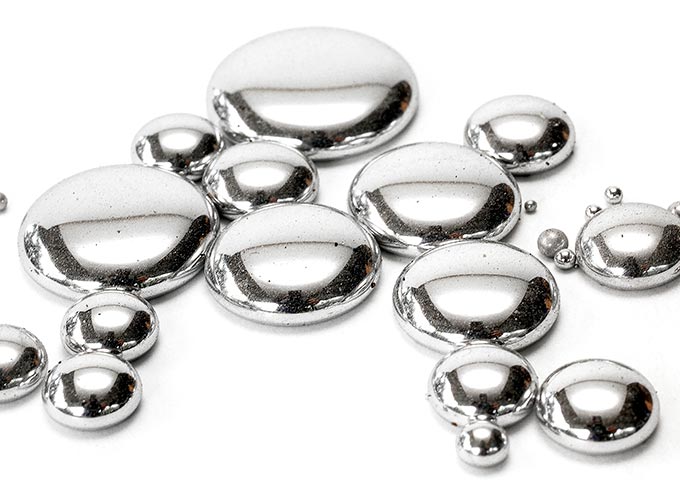Lethal mercury and its possible link with the chronic kidney disease
By: Amira Abultaif Kadamani
Photos:
Health and Wellness

By: Amira Abultaif Kadamani
Photos:
The human body is the most amazing, intelligent building we have. However, often, what happens under our noses goes unnoticed, and only when there is a failure do we realize what it is and how it works. That reality becomes more noticeable when the kidneys in charge of eliminating the metabolic waste, regulating the liquid contents, minerals, and body salts, contributing to control the blood pressure
keeping the acid base balance, and participating in hormone processes related to the production of red blood cells and the metabolism of vitamin D function at half capacity, or in a worst case scenario, they stop working, so it becomes urgent to turn to external help to compensate for such insufficiency. The number of people suffering from chronic kidney disease is growing to such an extent that their condition is one of the most critical public health problems in Colombia and in the world (850 million patients with this malady are estimated, according to the World Health Organization, WHO). Diabetes, blood pressure, and a diversity of genetic and immunological alterations are the causes that have traditionally led to the development of this clinical condition.
However, the environmental exposure to contaminating substances gains an increasing strength today among the assortment of risk factors, and as a part of that, mercury is predominating. When we consider that our country has the highest levels of per capita mercury contamination, according to reports by the Economic Commission for Latin America (ECLAC) and the Organization for Economic Cooperation and Development (OECD), the problem becomes especially relevant for the epidemiologic investigation.
Below, we present the anatomy of the investigation into the matter performed by Universidad del Rosario, funded by the Ministry of Science, Technology, and Innovation of Colombia (Minciencias), under the lead ership of doctors Carlos Trillos, epidemiologist; Marcela Varona, toxicologist; and Leonardo Briceño, PhD in political studies. All three professionals are specialists in occupational health. The Instituto Nacional de Salud (National Health Institute) collaborated on this initiative, which was supported by Salud Total EPS and Universidad de los Andes
Objective of the investigation
The purpose of this study, titled Levels of mercury and related polymorphisms in adult patients with chronic kidney disease in Colombia, is to identify the levels of mercury in people with chronic kidney disease at different stages and explore the relationship with them.

About the project, a researcher from del Rosario, Carlos Trillos, comments: “In this first approach, we are getting to know and assessing a phenomenon that has not been sufficiently explored within a particular population group, such as renal patients.”
The investigation includes a toxicological component, which will measure the level of mercury in the blood, urine, and hair of patients to determine the exposure degree; a clinical component, which will evaluate the kidney function and the associated comorbidities or pathologies, such as hypertension and diabetes, as well as other life style and health considerations that may be affected by mercury exposure; and a genetic component, which will identify variations in enzymes related to the handling of chemical substances like mercury. “This combination of factors and variables makes the project innovative and of great epidemiological importance,” states Trillos, who adds that because it is a descriptive and exploratory study, it will enable us to better understand the problem, although its scope does not demonstrate a causal relationship between mercury and chronic kidney disease “. In this first approach, we are getting to know and assessing a phenomenon that has not been sufficiently explored within a particular population group, such as kidney disease patients,” adds the researcher, who plans to have some results by the end of this year.
Methodology
The first task the researchers perform is a survey of patients suffering from chronic kidney disease to establish their potential environmental and work exposure to mercury, among other aspects linked with health history and habits. Subsequently, hair, urine, and blood samples are collected to be analyzed in a lab specialized in toxicology, genetics, and blood chemistry. In this way, the amount of mercury in the organism is measured. It is worth mentioning that these biomarkers enable us to detect the concentration of metal in a different way: the presence of hair suggests a chronic exposure (permanent and long lasting), whereas the presence of metal in the blood or urine shows a more recent exposure.
The blood samples are additionally submitted to genetic testing to determine whether there are gene variations or polymorphisms codifying the production and working of enzymes (belonging to the glutathione and metallo transferase groups) that help eliminate substances. This will lead to determining its relationship with the levels of mercury accumulated in the body.
Study population
The research includes 419 people with chronic kidney disease at stages 1 to 5, namely, low to high kidney damage, the latter being the stage in which the individual normally needs dialysis due to the insufficiency of the kidneys (when it gets to less than 10 per cent compared to normal). These patients belong to the network of affiliates of Salud Total EPS and are located in 10 cities in the country (Barranquilla, Bogotá, Bucaramanga, Cali, Cartagena, Ibagué, Manizales, Medellín, Pereira, and Santa Marta.
Context of the chronic kidney disease
This is a growing pathology affecting 13.4 percent of the world’s population today; it occurs more in men than in women, and its incidence increases with aging
In the period between July 10, 2019 and June 30, 2020, the high cost account (CAC, acronym in Spanish) of the Colombian health system (Ministry of Health and Social Protection) recorded (according to reports from the EPS) 849,874 people with ERC at any of the stages. The prevalence was 1.7 cases per 100 inhabitants, whereas the deaths from this cause was 21,651 in the period mentioned.
According to the CAC report, the departments and districts having the highest standardized prevalence in 2020 are Atlántico (mostly in Barranquilla), Bolívar, Bogotá, Cartagena, Huila, Meta, Putumayo, Risaralda, Sucre, and Valle del Cauca. Likewise, cities such as Bucaramanga, Medellín, and Santa Marta had a high prevalence, placing them in the top quart
Characteristics of mercury
It is classified in the periodic table of elements as a heavy, odorless, and insipid metal. It is volatile and ubiquitous, meaning that it can be found in all environmental matrices, among them, air, water, soil, muds, and food. As it is fat soluble, when entering the circulatory system, it builds up in organs that are rich in fats, like the brain; that is why some of the first symptoms appear in the central nervous system.
Mercury is widely used today in the illegal mining industry as a goldbinding agent: it sticks to the precious metal, forming an amalgam that allows decantation when heated. In this combustion, part of the mercury is released into the air and the rest falls on the hydric sources, where the microorganisms transform it into methylmercury, an even more toxic compound than the element in its original state. Mercury builds up along the food chain: the aquatic plants and plankton absorb the methylmercury, the fish eat it, and then they are eaten by the humans.
In Colombia, there are no mines for this metal today, and the one used in diverse processes is imported. In 2018, the country passed its adherence to the Convenio de Minamata (Minamata Agreement), an international treaty seeking to protect the health and environment from the emissions and releases of mercury and its compounds. Despite the fact that mercury is prohibited in mining in Colombia, it is nonetheless used in small scale mining and clandestine gold mining.

“Mercury has also been used to make amulets such as necklaces and bracelets, which are believed to protect against evil spirits and are worn by adults and children. Its manufacturing makes up an informal industry, especially in Bogotá, where the outbreaks of mercury intoxication have occurred due to these objects,” explains professor Marcela Varona from the School of Medicine and Health Sciences at Universidad del Rosario.
The main channel for the elimination of mercury accumulated in the body is the kidney. However, as it is fat soluble, it can remain in the organ for a long time, which causes its breakdown to be very slow and closely linked to the exposure to this chemical substance, the dose, and the characteristics of the individual.
Characteristics of chronic kidney disease
Characteristics of chronic kidney disease Chronic kidney disease is silent, slow, and progressive. The course from stage 1 to 5 normally takes over 10 years, although not all patients make it to this last stage, which varies according to the person. Often, the disease appears with different nonspecific symptoms: weakness, pain, depression, a lack of appetite, fatigue, constipation, sleep disorders, skin changes, cramps, nausea, and vomiting, as well as changes in urine volumen.
his happens because the disease has evolved in a significant way, altering the filtration of substances conducted by close to a million filtration units called nephrons, which are functional renal structures. The nephrons have various components: the glomerulus, units that filter the blood, and a system of tubules participating in the filtration process to maintain the balance of liquids and electrolytes. This balance is fundamental and must prevail for the correct functioning of all the cells in our body.
Products containing mercury
Mercury is used in old technology thermometers and dental amalgam and may be found in cosmetics, whitening creams, and some batteries, in addition to its presence in hydric sources and contaminated food, primarily fish and seafood. Intoxication is caused by ingesting infected liquids and meals, as well as direct contact with mucosae
Therefore, it is very easy for mercury to enter the body when inhaling vapors, which is frequent because it is very volatile. “Mercury has also been used to make amulets such as necklaces and bracelets, which are believed to protect against evil spirits and are worn by adults and children. Manufacturing these amulets makes up an informal industry, especially in Bogotá, where the outbreaks of mercury intoxication have occurred due to these objects,” like the 1993 upsurge in Bogotá or in Puerto Colombia, Atlántico, in 2017, with the intoxication of many children, toxicologist Marcela Varona explains